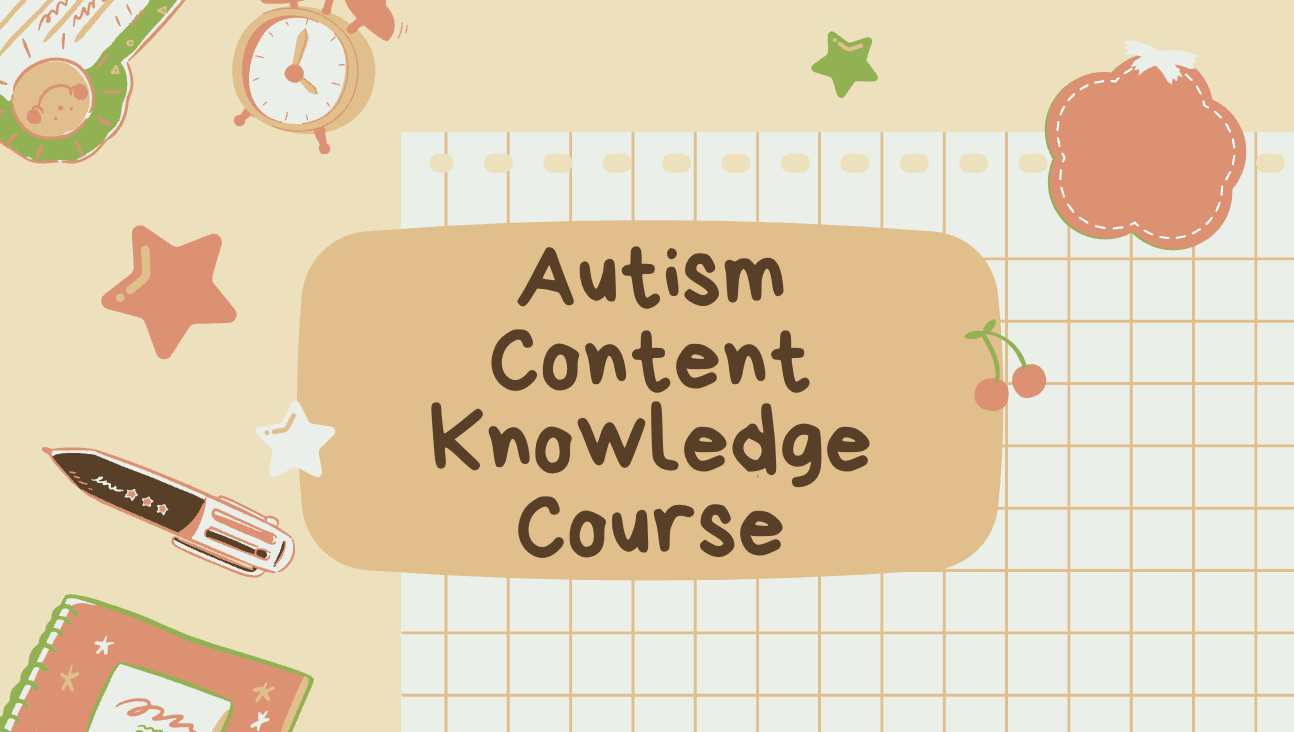
Content Knowledge
Autistic individuals experience the world around them in very unique ways. This course is designed to share knowledge with parents and or caregivers on potential differences in an Autistic individual’s neurology or mind and body to better understand what they experience day to day. The course covers seven main topics including: behaviors, social-emotional regulation, cognition, communication, and sensory and motor systems. With this knowledge at hand, families will feel more prepared to support their Autistic children and their needs.
-
Chapter 1 - What is ASD?
-
Lesson 1: Common Misconceptions of Autism
Due to presentations of Autistic individuals in mass media, the general public tends to have misconceptions of the diagnosis itself. Let’s debunk them together!
-
Lesson 2: Overview of Autism
Learn about the early signs of Autism and the diagnostic criteria under the guidelines of the DSM-5 for Autism Spectrum Disorder.
-
Lesson 3: Next Steps Following an Autism Diagnosis
Unsure about what to do after your child has been diagnosed? Learn about the next steps to take with your child including exploring various schooling options and therapy services to best support your child!
-
-
Chapter 2 - ASD Traits
-
Lesson 1: Stimming
Learn more about the common traits that Autistic children tend to have and why these traits make each Autistic individual unique.
-
Lesson 2: Why ABA is NOT the solution!
Oftentimes, medical practitioners or physicians recommend Applied Behavioral Analysis (ABA) therapy for Autistic children. However, many Autistic individuals have spoken about why this is not the best solution to support your child.
-
-
Chapter 3 - Social-Emotional Regulation
-
Lesson 1: Overview of Regulation
Learn more about social and emotional regulation including: helping your child understand their emotions, how to manage their emotions, and how you (as a parent or caregiver) can respond to it.
-
Lesson 2: Co-regulation
Learn more about how to manage emotions with your child through support and modeling. Ultimately, aiding your child in developing their self-regulation skills.
-
Lesson 3: Regulatory Strategies
Learn more about various regulatory strategies for your Autistic child and explore the one(s) that best fit your child’s needs.
-
-
Chapter 4 - Cognition
-
Lesson 1: Common Cognitive Misconceptions
The general public tends to believe that all Autistic children possess intellectual disabilities. Learn more about why this isn’t true and explore the spectrum of cognitive abilities.
-
Lesson 2: Presuming Competence
Learn more about why it is important to “presume competence” in order for your child to thrive in all aspects of their life.
-
Lesson 3: Academic Supports & Accommodations
Learn more about different academic supports and accommodations to help your child learn to the best of their ability in the home and or classroom settings.
-
-
Chapter 5 - ASD Sensory Systems
-
Lesson 1: Types of Sensory Processing
Explore the different types of sensory processing and determine which one your child fits in best based on their interests and behaviors.
-
Lesson 2: Interoception
Learn more about how to support your child in being aware of their internal body signals such as their heart rate, breathing, hunger, pain, or need to use the restroom.
-
Lesson 3: Sensory Supports & Accommodations
Learn more about the different sensory supports and accommodations to best support your child with their sensory needs day to day in various settings.
-
-
Chapter 6 - ASD Motor Systems
-
Lesson 1: Types of Motor Systems
Learn more about the types of motor systems: fine motor versus gross motor and how to best support your child in their motor abilities if challenged.
-
Lesson 2: Motor Coaching
Learn more about activities and different strategies to best support your child in their motor coordination.
-
Lesson 3: Motor Supports & Accommodations
Learn more about different motor supports and accommodations to best support your child in their day to day life in various settings.
-
-
Chapter 7 - Communication
-
Lesson 1: Spectrum of Communication Abilities
Learn more about the types of language or speech and various communicative abilities on the spectrum of Autism from verbal, non-verbal, fluent, and more.
-
Lesson 2: Communication Supports & Accommodations
Learn more about different communication supports and accommodations to best support your child in their day to day life in various settings.
-
Let's learn together!
✳
Let's learn together! ✳
YOU KNOW THEM BEST
YOU ARE THE EXPERTS
As the parent or caregiver of your Autistic child, you are the expert! You know your child's behaviors, needs, and interests best. This course shares additional information that can support you in having a better understanding of the neurological processes that your child may experience that he or she may not be able to express or explain. After completing this course, you will gain a greater insight on the Autism diagnosis and how to meet your child where they are at.
What you’ll learn
-
In several topics, parts of the brain and or body and their functions will be explained in relation to the Autistic experience. Brain processes differ from person to person.
-
Although each Autistic individual experiences the world around them differently, there are common characteristics unique to Autism that most Autistic individuals may share.
-
For each of the seven main topics, various supports and accommodations will be highlighted to ensure that parents and or caregivers have strategies to support their Autistic child’s needs.





